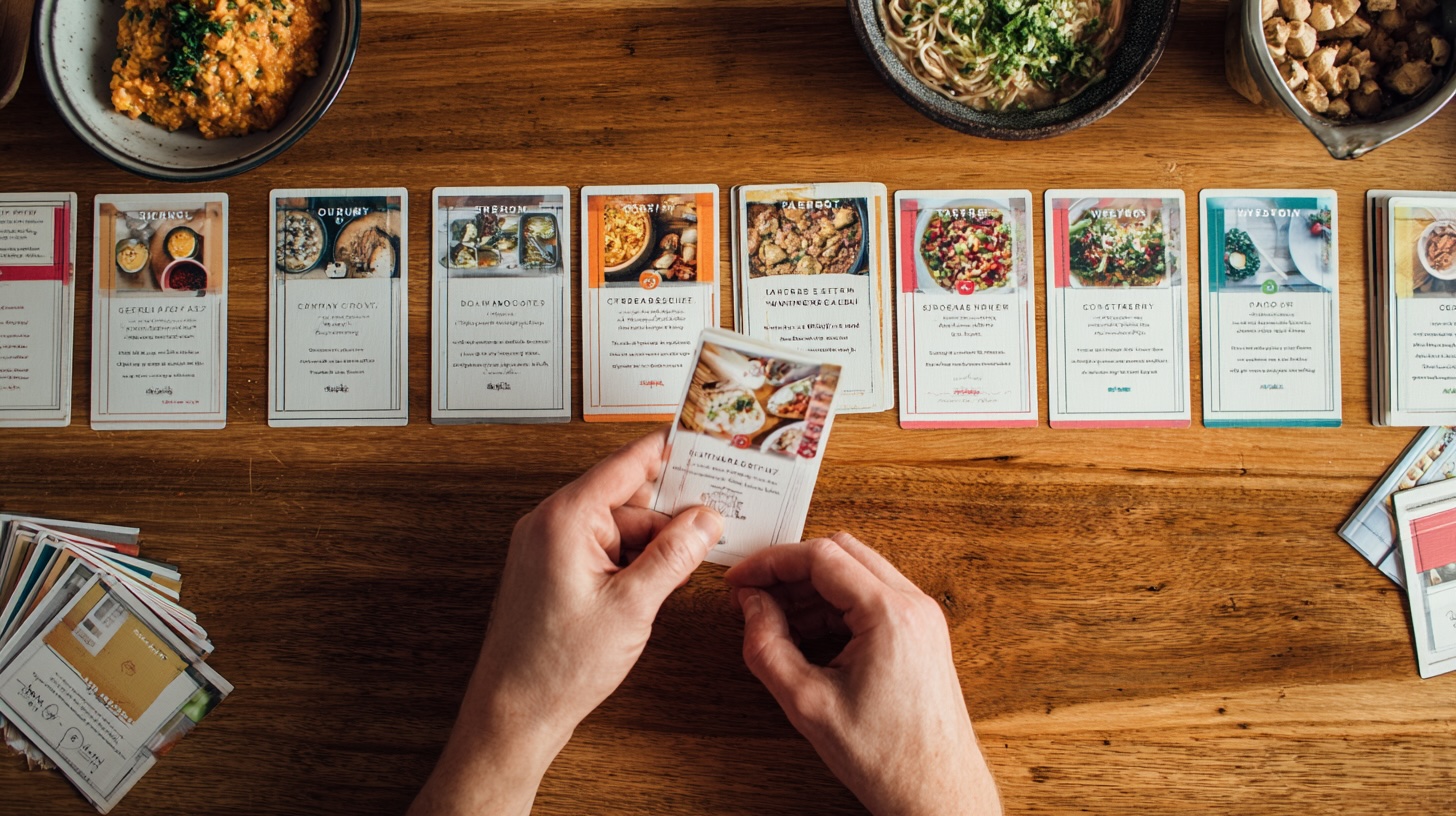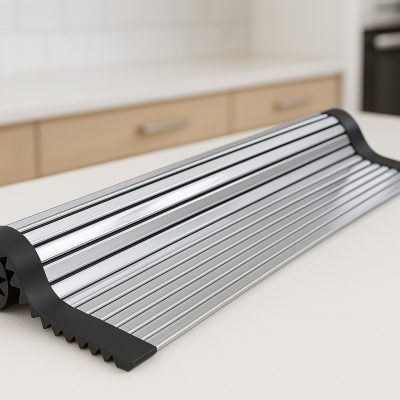Podcast:
In the modern landscape of entertaining, a new philosophy has taken root, one that gently pushes aside the rigid, performance-based standards of the past. Today’s most memorable gatherings are not defined by their flawlessness but by the quality of the connection they foster. This guide is built upon a principle of “Intentional Informality”—a thoughtful approach where every choice, from the menu to the music, is deliberately made to cultivate a warm, welcoming, and profoundly relaxed environment. The goal is no longer to impress with a display of perfection but to create a space where guests feel genuinely seen, comfortable, and connected.
At the very heart of this philosophy lies a fundamental truth: a host’s demeanor is contagious. If you are stressed, scurrying, and preoccupied with minor details, your guests will inevitably absorb that tension, feeling more like spectators at a stressful performance than cherished participants in a joyful occasion. Conversely, when the host is relaxed, present, and clearly enjoying the evening, that ease permeates the entire space, giving everyone permission to do the same. Therefore, the primary objective of any dinner party plan is to ensure the host can have fun. All subsequent advice—every recipe, every layout suggestion, every timeline—is a strategic tool designed to achieve this essential outcome. As one expert wisely notes, “Your guests will be as relaxed as you are”.
This shift in focus requires abandoning a common set of anxieties, particularly those tied to the state of our homes. Many would-be hosts are paralyzed by the belief that their space is too small, not “done” yet, or that they lack the “right” servingware. It is crucial to release these insecurities. Your friends and loved ones are coming to connect with you, not to critique your decor or the square footage of your apartment. The things that may seem like glaring imperfections to you—a scuff on the wall, a less-than-pristine carpet, or mismatched plates—will likely fly completely under their radar. The true essence of hospitality is the generous act of opening your home and sharing your time. Waiting for perfection is a recipe for never hosting at all. By embracing the beauty of the imperfect and prioritizing the warmth of the welcome, you can transform even the most compact apartment into a haven of good food, great conversation, and lasting memories.
The Foundation of a Flawless Party: Mindset & Strategic Planning

The secret to a truly relaxed dinner party lies not in frantic day-of execution, but in deliberate, thoughtful preparation. The work done in the weeks and days before your guests arrive is what builds the scaffolding for a seamless and enjoyable evening for everyone, especially the host. This foundational stage is less about ticking off chores and more about cultivating the right mindset, making strategic choices, and creating a detailed plan that serves as your most powerful antidote to stress.
Overcoming Hosting Anxiety: From Performance to Presence
Hosting anxiety is a common experience, often rooted in a fear of judgment, past experiences of social rejection, or the pressure to perform flawlessly. The first and most critical step is to consciously reframe the event’s purpose. A dinner party is not a test of your culinary skills or interior design prowess; it is an opportunity to connect with people you care about and create shared memories. This mental shift from performance to presence is the cornerstone of a joyful hosting experience.
To facilitate this shift, several actionable techniques can be employed. Reciting simple affirmations, either aloud or internally, can help disrupt negative thought patterns. Phrases like, “I embrace the unknown with courage,” or “I release the need to focus on worst-case scenarios,” can redirect your focus toward what you can control and the positive potential of the evening. It is also essential to practice self-compassion. Inviting people into your personal space is an act of vulnerability; acknowledge your courage and treat yourself with kindness, understanding that hosting is a skill that improves with practice. If the idea of a full-fledged party feels overwhelming, start small. Hosting just one or two trusted friends can be a low-stakes way to build confidence and hone your skills before graduating to a larger group.
A significant source of anxiety is the feeling of being solely responsible for every detail. The most effective hosts understand the power of delegation. You do not have to do it all yourself. Asking for help is not a sign of failure but of smart, collaborative planning. This can take many forms. You might opt for a potluck, where you provide the main course and assign guests to bring appetizers, sides, or dessert. This not only lightens your cooking load but also involves guests in the creation of the meal, fostering a more communal atmosphere. Even for a non-potluck dinner, you can ask a friend to bring a bottle of wine, pick up a dessert from a favorite bakery, or simply help with chopping vegetables when they arrive. Most guests are happy to contribute and will appreciate being asked.
The Art of the Guest List: Curating for Comfort
In a small apartment, the size of your guest list is not a limitation but a strategic advantage. While a large, bustling party has its appeal, a more intimate gathering is often better suited to a compact space. A smaller group ensures that everyone is physically comfortable, avoiding the feeling of being cramped or crowded. More importantly, it fosters a different quality of interaction. With fewer people, conversations can become deeper and more engaging, allowing for a more personal and memorable experience. For a sit-down dinner party in a small home, a guest list of four to six people is often the sweet spot, allowing for comfortable seating and easy conversation flow.
Beyond the numbers, consider the social dynamics of the group you are assembling. While mixing different social circles can be exciting, for a low-stress evening, it can be helpful to curate a guest list where people will likely get along well. One effective strategy is to ensure that every guest knows at least one other person at the party besides you. This simple measure takes the pressure off the host to constantly “babysit” conversations and facilitate introductions, as guests will have a natural starting point for interaction.
Finally, the simple act of collecting RSVPs is an indispensable part of planning. Knowing exactly how many people to expect is crucial for managing everything from the quantity of food and drink to the number of chairs and plates needed. It eliminates the stress of uncertainty and allows you to plan with confidence. Use an event platform, a group chat, or a simple email to request that guests confirm their attendance by a specific date. A week before the event, send a friendly reminder message; this not only helps solidify your numbers but also builds anticipation for the party.
The Master Plan: A Stress-Free Timeline
A detailed timeline is the host’s single most effective weapon against last-minute panic. The process of hosting involves numerous small, disparate tasks that can feel overwhelming when viewed as a whole. A timeline breaks this large project down into a series of smaller, manageable steps spread out over time, transforming chaos into a clear, actionable plan. This proactive approach not only ensures that everything gets done but also provides a powerful psychological buffer against anxiety. By knowing you are on track, you can approach the day of the party with a sense of calm and control.
The following master timeline consolidates best practices into a comprehensive checklist. It works backward from the event, detailing what to do at each key interval. This is not merely a to-do list; it is a strategic framework designed to front-load the work, leaving you free to handle only the final touches—and enjoy yourself—as the party approaches.
Table 1: The Ultimate Dinner Party Timeline: Your Master Plan for a Stress-Free Event
|
Timeframe |
Planning & Communication |
Menu & Drinks |
Space & Ambiance |
Host Prep & Self-Care |
|
3-4 Weeks Out |
Set a date. Choose a theme. Finalize guest list and send invitations (include RSVP date and a line about dietary restrictions). |
Brainstorm menu ideas that align with your theme and skill level. Bookmark or print recipes. |
Envision the party flow (cocktail hour, dinner, etc.). |
Acknowledge the decision to host! This is the first step. |
|
2 Weeks Out |
Follow up on any outstanding RSVPs. Finalize guest count. |
Finalize the menu. Study recipes to create a cooking schedule. Shop for non-perishable food items, wine, and liquor. |
Plan your tablescape and decor. Shop for any needed items like candles, linens, or a new vase. Create a music playlist. |
Start any ambitious DIY projects for decor (e.g., place cards). |
|
1 Week Out |
Send a brief, friendly reminder to confirmed guests, perhaps mentioning your excitement. |
Create a detailed grocery list for perishable items. Check your pantry for existing ingredients. Count all tableware, glassware, and serving dishes to ensure you have enough. |
Do a major house cleaning and tidying session. This is the “deep clean” so you only need to do touch-ups later. |
Plan your party outfit. |
|
2-3 Days Before |
Create a seating chart if desired. |
Do all your perishable grocery shopping. |
Arrange furniture for optimal flow. Designate and clear a space for coats and bags. Stow away personal clutter. |
Review your cooking timeline and prep list. Finalize your day-of schedule. |
|
1 Day Before |
|
Do a significant portion of your food prep: chop vegetables, make marinades, assemble casseroles (like lasagna), bake desserts. |
Set the dining table completely. Set out all serving dishes and utensils, labeling them with sticky notes so you know what goes where. |
Get a good night’s sleep. Order takeout so you don’t have to cook or mess up the kitchen. |
|
Day Of: Morning |
|
Buy fresh flowers and ice. Begin any slow-cooker recipes. Do final food prep like making dips or assembling salads. |
Do a final light cleaning touch-up. Empty the dishwasher and trash cans to be ready for the party. |
Wake up and do something relaxing for yourself. This is your day to enjoy too!. |
|
The Final Hour |
|
Set out appetizers. Prepare the welcome drink. Fill a pitcher with water for the table. |
Light candles. Turn on your playlist at a low volume. Do a final bathroom check (fresh towels, TP visible). |
Take 30 minutes to shower, change into your party outfit, and relax with a drink. Your calm is the final, most important ingredient. |
Designing the Space: Making Small Feel Expansive and Intimate

Hosting in a small apartment is an exercise in creative spatial manipulation. The objective is not to trick guests into believing the space is larger than it is, but rather to design an environment so comfortable, functional, and engaging that its physical dimensions become irrelevant. This is achieved by focusing on psychological comfort as much as physical capacity. Every decision about furniture placement, seating, and storage should be evaluated through the lens of its impact on guest movement, interaction, and ease. In this way, the host acts as a social architect, shaping the flow and energy of the party through the thoughtful arrangement of their home.
The Small-Space Illusionist: Furniture, Flow, and Zones
The furniture layout that works for everyday living is rarely suitable for entertaining. The primary goal when preparing for guests is to create optimal flow. This means establishing clear, unobstructed pathways between the most important areas of the party: the entrance, the main gathering space, the kitchen, and the bathroom. Every host dreads the “party pile-up,” where guests become clustered in one corner, unable to move or mingle freely. To prevent this, experiment with your layout. Push larger pieces of furniture, like sofas and bookshelves, against the walls. If a piece of furniture, such as a bulky coffee table, will not be used for the party, consider temporarily moving it into a bedroom or another room to open up the central floor space.
A key strategy for encouraging movement and managing energy is to create distinct “party zones”. Instead of placing all the food and drinks in one spot (which inevitably creates a bottleneck), distribute them strategically throughout your space. For example, set up a drink station on a console table in one area, place appetizers and snacks on a side table or bookshelf in another, and create a cozy conversation nook with a few chairs or floor cushions in a third. This thoughtful distribution naturally encourages guests to circulate, move between zones, and interact with different people throughout the evening. In particularly compact rooms, arranging all seating around the perimeter is a powerful technique. This opens up the middle of the room for standing and mingling, and it can foster a more communal atmosphere where everyone is part of one large conversation.
The Convertible Dining Room: Creative Seating Solutions
The biggest challenge in a small space is often providing enough seating, especially for a sit-down dinner. However, with creativity, almost any space can be transformed into a dining area. If you have room for a permanent dining table, an extendable model is a worthwhile investment, offering the flexibility to expand for guests and retract for daily life. Another excellent choice is a pedestal table. By eliminating the corner legs that can obstruct chairs, a pedestal design allows you to squeeze in more people comfortably.
For those without a dedicated dining room, a simple folding table is a magical tool. A standard six-foot folding table, when draped with a beautiful, floor-length tablecloth, can be utterly transformed into an elegant dining surface. Placed in front of a sofa (which provides seating on one side), with a few chairs on the other, it creates an instant, intimate dining room. Beyond tables, get creative with your seating. Benches are fantastic because they can accommodate more people than individual chairs. Opt for dining chairs with slim profiles and no arms, as they take up significantly less space. Do not hesitate to pull chairs from other rooms—a desk chair, a vanity stool, or even sturdy stools from a child’s room can be pressed into service for one night. A collection of modern, aesthetically pleasing folding chairs or stools can be a smart investment, easily stored on wall hooks or stacked in a corner when not in use. Finally, embrace the floor. A few comfortable floor pillows or poufs can make floor seating feel intentional and cozy, especially for a more casual gathering.
Thinking Vertically and Maximizing Surfaces
When horizontal square footage is at a premium, the most effective way to expand your capacity is to think vertically. “When square footage is limited, the best way to maximize space is to think up—not out,” advises event planner Virginia Frischkorn. This principle is especially useful for serving food and drinks. Tiered serving trays and cake stands are invaluable tools. They allow you to present a generous amount of appetizers, desserts, or snacks while occupying a very small footprint on your table or counter, adding visual height and dimension to your spread.
Beyond dedicated serving pieces, look at all the surfaces in your home with fresh eyes. During a party, almost any flat surface can be repurposed. A bookshelf can become a makeshift bar or a dessert station. A console table, once cleared of its everyday decor, is the perfect spot for a self-serve drink station. Even a sturdy ottoman, when topped with a large tray, can function as a coffee table or a surface for guests to place their plates and drinks. Don’t be afraid to clear off your desk or other non-traditional surfaces to create more options. This flexibility is key to making a small space work hard for you during a party.
The Efficient Micro-Kitchen
The kitchen is the command center for any dinner party, and in a small apartment, efficiency is paramount. Before you even begin cooking, the most impactful step you can take is to ruthlessly declutter your countertops. Clear away anything that is not essential for your party prep to maximize your workspace. To further free up counter real estate, utilize wall space. A wall-mounted magnetic knife strip replaces a bulky knife block, and a pot rack can get pots and pans out of your way but still within easy reach. A simple but brilliant trick is to use a large cutting board that is designed to fit over your sink, instantly creating an additional prep surface when you need it.
Inside your cabinets, smart organization can save you time and frustration during the cooking process. Use pull-out shelves to easily access items in the back of deep cabinets, and install vertical dividers to store baking sheets and cutting boards, allowing you to slide one out without unstacking everything. A pegboard mounted on an empty wall or the inside of a pantry door is a highly flexible solution for hanging utensils, small pans, and other tools. Finally, embrace the “clean as you go” mantra. As you finish with a bowl, pot, or utensil, wash it immediately or place it in the dishwasher. Starting your party with an empty sink and an empty dishwasher is a professional-level move that dramatically reduces the scope of your post-party cleanup and the mental load that comes with it.
The Heart of the Party: A Menu That Works for You

The menu is more than just the food you serve; it is a critical component of your overall hosting strategy. In a small space, the right menu can alleviate stress, manage guest flow, and even help overcome spatial limitations. The most successful hosts choose their menu not just based on what is delicious, but on what is delicious, can be largely prepared in advance, and can be served in a way that maximizes comfort and minimizes in-party labor. This strategic approach to cooking is what liberates the host from the kitchen, allowing them to be a present and engaged part of the celebration.
The Make-Ahead Menu: Your Secret Weapon
The single most effective strategy for a low-stress dinner party is to plan a menu that is almost entirely make-ahead. The goal is to spend your time with your guests, not with your stove. The ideal party dish is one that can be fully or partially prepared the day before, requiring only simple reheating or final assembly before serving. Many dishes, in fact, benefit from an overnight rest, as the flavors have more time to meld and deepen.
For main courses, one-pot wonders and casseroles are champions. Lasagna is a perennial favorite for a reason: it can be fully assembled a day or two in advance and simply baked before dinner. It is also hearty, impressive, and easily serves a crowd. Similarly, rich stews and braises like beef bourguignon, short rib chili, or braised lamb shanks are perfect make-ahead options that only improve with time. A simple roasted chicken or two can be fully prepped ahead of time, ready to be popped in the oven as guests arrive, filling your home with an irresistibly welcoming aroma.
Another brilliant approach is the “build-your-own” bar. A taco bar, for instance, allows the host to do all the prep work—cooking the meats, chopping the toppings, making the salsa—well in advance. At party time, you simply set out the components and let guests assemble their own meals. This format is not only low-stress for the host but also wonderfully interactive for guests and naturally accommodates picky eaters and dietary restrictions. The same concept works beautifully for a baked potato bar, a submarine sandwich station, or even a chili bar with a variety of toppings. For appetizers and desserts, stick to the same principle. A beautiful cheese and charcuterie board can be assembled ahead of time. Desserts like tiramisu or tres leches cake must be made in advance to allow them to set, making them perfect, stress-free options.
Choosing Your Service Style: Potluck, Buffet, or Family-Style?
How you serve the food is a strategic decision that directly impacts the flow and feel of your party. In a small space, moving the food off the dining table is often a game-changing move. This is where buffet-style or family-style service shines. By setting up the main dishes on a separate surface—a kitchen counter, a sideboard, or a console table—you free up an immense amount of real estate on the dining table itself. This allows for more comfortable elbow room for your guests and more space for decor like candles and flowers, creating a less cluttered and more elegant dining experience.
A potluck is another excellent format, particularly for a host concerned about the volume of cooking. By asking guests to contribute a dish, you not only reduce your own workload but also foster a wonderfully collaborative and communal spirit. To ensure a balanced meal, it is wise to assign categories (e.g., “bring a side dish,” “bring a dessert”) so you do not end up with three bowls of potato salad. The following table breaks down the pros and cons of each format to help you choose the best style for your specific party.
Accommodating with Grace: Dietary Restrictions
Being a thoughtful host means ensuring all your guests have something delicious to eat. Addressing dietary restrictions with grace is a key part of modern entertaining. The proper etiquette is to inquire about any needs in advance, not at the dinner table. The simplest and most polite way to do this is to include a gentle, open-ended question in your invitation, such as, “Please let me know if you have any dietary restrictions I should be aware of”. This approach is inclusive, avoids singling anyone out, and gives you the information you need to plan an accommodating menu.
When planning your menu, you do not necessarily need to create entirely separate dishes for each restriction. Often, the most elegant solution is to design a menu that is naturally inclusive. Offering a variety of dishes, including several vegetable-based ones, can often cater to multiple needs simultaneously. A menu featuring a main course, a hearty grain salad, roasted vegetables, and a green salad will likely have something for everyone. Labeling dishes on a buffet can also be extremely helpful, especially for guests with allergies, and it saves you from having to repeat the ingredients of each dish multiple times.
Make-ahead cooking is perfectly suited to accommodating dietary needs. For vegetarian guests, a rich mushroom lasagna, a flavorful curried vegetable and chickpea stew, or baked stuffed peppers are all wonderful main courses that can be prepared in advance. For gluten-free guests, many dishes are naturally compliant. A hearty chili or beef stew, a baked potato bar with various toppings, or any roasted meat or fish served with roasted vegetables and rice are excellent choices. If you are making a dish like lasagna or tacos, simply use gluten-free noodles or corn tortillas to adapt the recipe. By planning ahead, you can ensure that accommodating restrictions is a seamless and stress-free part of your hosting process.
Crafting the Ambiance: The Sensory Details That Dazzle

Once the logistical framework of your party is in place, the focus can shift to the more artistic elements of hosting. Ambiance is the invisible architecture of a great party—the mood and feeling you cultivate through a careful orchestration of sensory details. It is what transforms your apartment from an everyday living space into a special, memorable venue for the evening. The most effective ambiance is not about grand gestures but about a series of small, thoughtful choices in lighting, decor, music, and conversation that work in harmony to create a cohesive and inviting world for your guests. The goal is to craft an environment that quiets the outside world and focuses attention inward, on the warmth of connection and conversation.
The Magic of Lighting
Lighting is arguably the single most powerful tool for transforming the atmosphere of a room. Harsh, bright overhead lighting is the enemy of intimacy and a certified mood-killer. The golden rule for a dinner party is to create a soft, warm, and inviting glow. If you have dimmers, use them. If not, turn off the main overhead lights and rely on a layered combination of lamps with warm-toned bulbs, candles, and even delicate string or fairy lights. This simple act can instantly make a space feel cozier, more intimate, and more magical.
Candles are an essential part of this strategy. Use them generously, but thoughtfully. A collection of candles in varying heights on the dining table adds a dynamic, flickering centerpiece. Scatter a few more around the room on stable surfaces to extend the warm glow. A non-negotiable rule of sophisticated hosting is to always place a lit candle in the bathroom; it adds a touch of elegance and consideration. When choosing candles for the dining table, opt for unscented varieties so their fragrance does not compete with the aroma of the food.
The Art of the Tablescape & Budget Decor
A beautifully set table signals to your guests that the evening is a special occasion. You can create a stunning tablescape without a large budget or an abundance of space. The key is to create visual interest through layering. Start with placemats or a table runner, then add chargers (if you have them), dinner plates, and neatly folded cloth napkins. Using your best tableware, even if it is a mismatched collection, elevates the experience.
In a small space, the centerpiece should be low and unobtrusive to facilitate easy conversation and eye contact across the table. A towering floral arrangement can act as a barrier. Instead, opt for a more minimalist approach. A few single stems in small bud vases, a scattering of tea lights, or even a beautiful bowl filled with seasonal fruit like lemons or pomegranates can be incredibly chic and effective. You do not need to spend a fortune on decor. A simple, crisp tablecloth can hide a less-than-perfect folding table, instantly unifying the look. Cute ribbons can be used in place of formal napkin rings. And thrifting a collection of mismatched vintage plates can create a charmingly eclectic and personal tablescape that feels curated and unique.
The Unspoken Guest: Your Playlist
Music is a vital, though often subconscious, element of a party’s ambiance. It fills the silences, sets a tone, and provides a gentle energy to the room. The key is to treat your playlist as a background element, not the main event. Prepare a playlist in advance that reflects the mood you want to create—whether it is upbeat and jazzy, calm and soulful, or cool and indie. Having this ready to go means you will not be fiddling with your phone or stressing about what song to play next during the party.
The most critical aspect of your party playlist is volume control. The music should be audible enough to be noticed but quiet enough to allow for comfortable conversation. If your guests have to raise their voices to be heard, the music is too loud. The goal is to create a pleasant sonic backdrop that enhances the atmosphere without ever overpowering the primary purpose of the gathering: conversation and connection.
The Art of Conversation
As the host, you are also the evening’s social conductor. While you do not need to control every interaction, it is your role to help facilitate conversation, especially at the beginning of the evening or if your guests do not all know one another. The simplest way to do this is by making thoughtful introductions. When you introduce two guests, go beyond just their names; mention a common interest, a shared experience, or something you admire about each of them to provide an instant conversational launchpad.
It is always wise to have a few light, open-ended conversation starters in your back pocket to deploy during any potential lulls. Questions like, “Have you read any good books or watched any interesting shows lately?” or “Do you have any exciting travel plans coming up?” are easy and inclusive. For a more playful vibe, a round of “Would You Rather” can be a fun and revealing icebreaker. Unless you know your guests very well, it is generally best to steer clear of potentially divisive topics like work, money, or politics early in the evening. For a more structured approach, simple party games like Codenames, charades, or even a deck of question cards can be a fantastic way to break the ice, generate laughter, and ensure everyone feels involved.
The Graceful Host: Execution and Enjoyment

The day of the party is when all your thoughtful planning comes to fruition. This is the performance, but if you have prepared well, it should feel less like a stressful production and more like a graceful dance. Your primary role during the party itself shifts from “planner” to “social conductor.” Your focus should be on managing the energy of the room, ensuring your guests feel comfortable and cared for, and, most importantly, enjoying the celebration you have worked to create. The systems you have put in place—the make-ahead menu, the self-serve drinks, the pre-set table—are all designed to liberate you from logistical labor so you can be present for the human element of the party.
The Final Countdown: The Hour Before Arrival
The final hour before your guests arrive is a critical transition period. This is not the time for major tasks but for final touches and, crucially, for the host to relax and get into a celebratory mindset. A calm, happy host is the most welcoming sight for any guest. A good minute-by-minute guide for this final stretch might look like this:
- T-60 to T-30: Do a final sweep of the party space. Light your candles to let their glow build. Turn on your playlist at a low, welcoming volume. Set out any room-temperature appetizers. Fill a pitcher with ice water and place it on the table or at the drink station. Get your welcome drink ready to be poured. Do one last check of the bathroom to ensure it is tidy, with fresh hand towels and visible extra toilet paper.
- T-30 to T-0: This time is for you. Pour yourself a drink. Take a quick shower if you need to refresh. Change into your planned party outfit. Taking this 30-minute buffer to decompress is perhaps the most important prep work of the day. It ensures you will greet your first guest with a genuine smile, not a flustered expression.
As guests arrive, welcome them warmly at the door. Take their coat and bag immediately and direct them to the designated, out-of-the-way storage spot—a bedroom is ideal for this, as it keeps the main party area free of clutter. The very next step should be to offer them a drink. This is a universal gesture of hospitality that immediately helps a guest to relax and feel cared for.
Navigating the Evening with Ease
Once the party is underway, your role is to guide the evening with a light touch. If you are serving buffet-style, gently direct guests toward the food, perhaps in small groups to avoid a long line. If you are serving family-style, a practical tip is for the host to take the seat closest to the kitchen, which allows for easy access to grab forgotten items or clear dishes without disrupting the table. Throughout the meal, try to clear empty glasses and used plates promptly but discreetly. A cluttered space can feel chaotic, so removing these items as they are finished helps maintain a sense of order and calm.
One of the best systems you can implement in a small space is a self-serve drink station. A well-stocked bar cart or a designated area on a side table with wine, a pre-batched cocktail, non-alcoholic options, glasses, and an ice bucket is a host’s best friend. This setup empowers guests to help themselves, keeps traffic out of your potentially small and busy kitchen, and frees you from the role of bartender, allowing you more time to mingle. Pre-batching a signature cocktail in a large pitcher is a particularly savvy move that feels special but requires zero in-party effort from you.
Finally, remember to be a social butterfly. It is natural to gravitate toward the people you know best, but a great host makes an effort to connect with everyone. Float between different conversations and groups throughout the night. Your attention is a gift; by spreading it around, you ensure that every single guest feels welcomed, included, and valued.
Conclusion: The Afterglow and the Art of the Effortless Cleanup

The party does not end for the host when the last guest departs. The final act is the cleanup, and how you approach it can significantly impact your overall memory of the evening. Waking up to a disastrous kitchen can sour the warm afterglow of a wonderful party. By employing a strategic, two-phase approach to cleanup, you can ensure the night ends on a high note, preserving the joy of the occasion.
The first phase is the immediate post-party triage. This should be a swift, 15-minute, high-impact effort performed right after you have closed the door behind your final guest. Resist the temptation to leave everything for the morning. This quick triage involves three key tasks: first, put away all leftover food in airtight containers. Second, do a quick trash sweep, gathering all the obvious garbage like used napkins and disposable cups into one bag. Third, and most importantly, deal with the dishes. At a minimum, rinse every plate, glass, and piece of silverware and load them into the dishwasher. For pots, pans, and anything that needs hand-washing, a quick scrape and a long soak in hot, soapy water overnight will make the next day’s work infinitely easier. This brief burst of activity prevents food from hardening onto plates and contains the mess, ensuring you wake up to a manageable task rather than a daunting project.
The second phase can happen the next morning, and thanks to your triage, it will be far less intimidating. A systematic approach, like the one detailed by Mantel & Table, makes the process efficient. Work in a logical order: put away any remaining non-washable items, wipe down all countertops and surfaces, and then tackle the hand-washing, starting with the most delicate items like glassware and finishing with the soaked pots and pans. Once the washing is done, wipe down the sink, take out the trash and recycling, and give the floor a quick sweep.
The very final step in this process is perhaps the most important: reward yourself. After the kitchen is clean and quiet, pour yourself a cup of coffee or a final glass of something nice. Sit down, relax, and savor the accomplishment. Bask in the quiet satisfaction of a clean home filled with the lingering warmth of friendship and connection. This final moment of reflection reinforces the core principle of this guide: that hosting, when done with intention and care, is not a chore to be endured but a deeply rewarding act of generosity, for both your guests and yourself.







